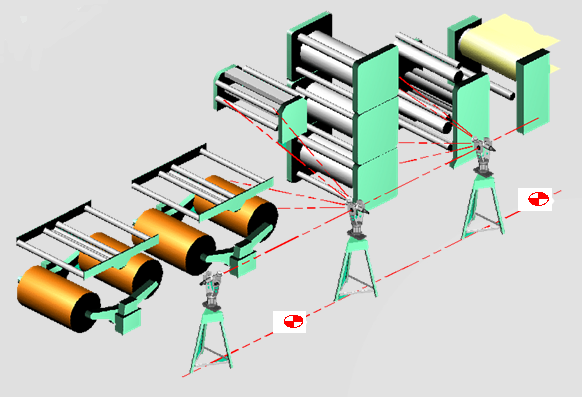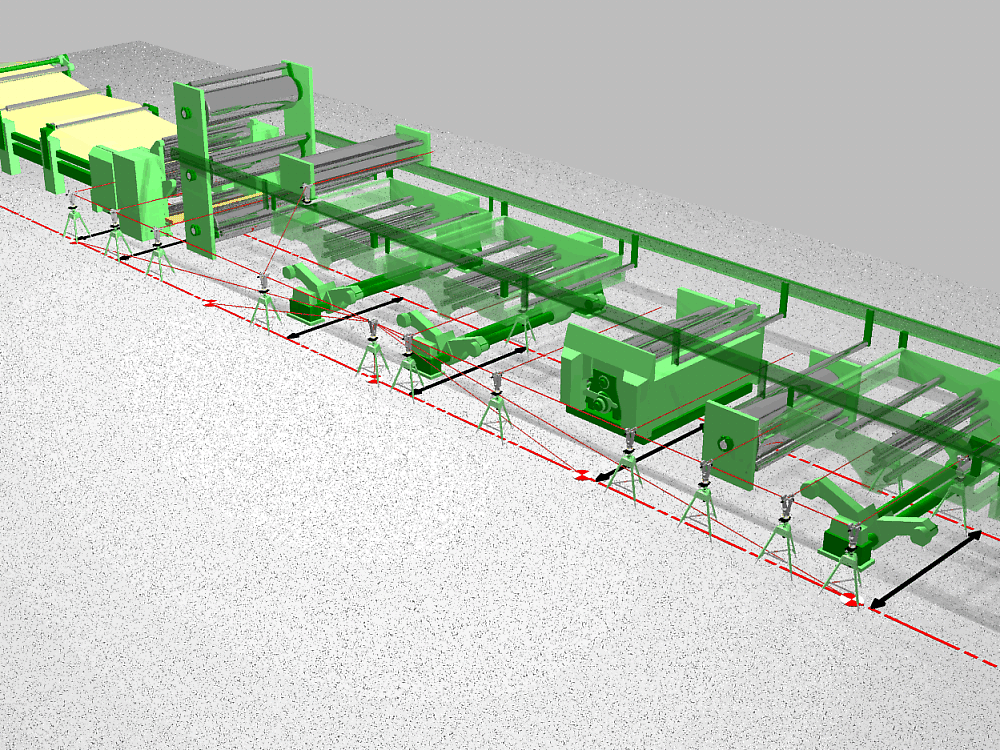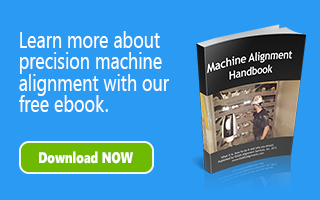With many options in alignment tools and solutions available to manufacturers today, it is important to understand some basic principles of machine alignment so that you are making an informed decision when selecting the best solution for your particular machine or production line.
Why is Machine Alignment So Important?
Many of the costly equipment and product issues that manufacturers face on a day to day basis can be attributed to the misalignment of components within the process line. When components such as rolls, rails, dies, gears, motors, jigs, cutters, drums and more, are not properly aligned and working in unison with the other components of the line, manufacturers will see a significant increase in waste and scrap, poor product quality, a rise in unplanned downtime, excessive component and gear wear, and ultimately, very unhappy end customers.
Getting Back to Basics

Establishing a baseline with optical tooling and/or the newer AT960 laser trackers, ensures that all components in ANY part of the machine are parallel to one another and perpendicular to the machine centerline.
With close to 35 years in the field of industrial precision measurement and machine alignment, OASIS has tried and tested almost every measurement tool and alignment solution available today. We have found that no matter the measurement instrument used, one of the basic principles of proper machine alignment still remains the most effective: use the centerline of the machine as a common reference and base every measurement on that reference.
A common reference is a reference that can be used anywhere on the machine. When optical instruments are used, a typical reference for parallelism is an offset baseline. With a laser tracker, the common reference is comprised of an array of reference targets all measured from a unique location. In order to determine the best offset baseline, a statistical analysis of the individual component centerlines is performed. The trend line found determines the best fit centerline and hence the best offset baseline. Establishing the baseline ensures that all components of the line are parallel to one another and perpendicular to the centerline within recommended tolerances. Baseline monuments are installed in the floor and can be used with either optical filer targets or laser tracker tools for all future readings of the reference target.
Yes, it can be quicker and simpler to align one component to another using an alignment tool such as a gyroscopic system instead of establishing and/or using the machine centerline as a reference. However, these inertial measurement tools are unable to tie into an overall machine alignment optimization plan which involves utilizing the machine centerline and offset baseline. Alignment methods using optical tooling and/or the newer laser tracker technology, which minimize line-of-sight issues, are based on the machine centerline and therefore generate an overall alignment picture of the line as part of the alignment procedure.
One of the biggest issues associated with aligning components to each other instead of the machine centerline, is that the risk of creating a parallelogram in the line greatly increases. When your machine is aligned in a parallelogram, you will begin to see significant tracking and tension problems leading to expensive issues such as excessive edge trimming, wrinkles, sheet breaks, clothing wear and more.

When a component is not aligned perfectly perpendicular to the centerline and all others are then aligned parallel to that one, a parallelogram can occur. The arrow shown indicates the direction of the web when steered by misaligned rolls set in a parallelogram.
For manufacturers, understanding the standard alignment principle of using the machine centerline as a common reference will go a long way in helping to determine the best alignment solution for your process. In future posts on this topic, we will provide additional “How to Align” tutorials for specific applications. In the meantime, if you would like to meet with an OASIS representative to discuss your process line and any issues you may be having, please contact us – we would be happy to assist you.

